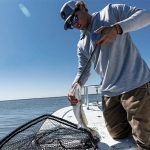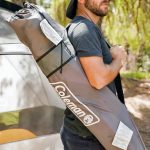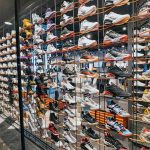The New Sports Authority is attempting to get over the hump and navigate through the obstacles to a smooth integration of the now year-old merged entity that combines the former Gart Sports and The Sport Authority. The bottom-line appears to be a clear beneficiary of the move to integrate the two companies as management eliminates redundancies, leverages shared services against more volume, and moves to create a common look, feel, and experience in the stores.
The road has clearly not been an easy one as management and buyers are turned over in efforts to fine tune the organization to handle the challenges of a larger business and the cost, labor, and time involved in fixing the issues at the Old TSA stores takes resources away from building the healthier Gart business.
That challenge has certainly hurt as the combined entity now sports a market cap a third the size of their “smaller” rival, Dicks Sporting Goods. The TSA market cap is now just $551.3 million, or 30% below the value of the combined entity one year ago, while DKS has soared to $1.55 billion, up 86% over the same period.
New TSA management stuck to their guns and refused to provide any insight into the Q2 sales numbers for the old TSA last year, but did provide some comp sales figures and pro forma earnings results. The balance of the figures reported in the chart below are from calculations based on percentages and actuals that CFO Tom Hendrickson provided for gross margin and SG&A.
Comp store sales for the combined entity were down 3.8% for the quarter on top of a 0.6% comp decline at Gart last year and a 5.0% decrease at the Old TSA. The decline for the period was a disappointment based on TSAs earlier guidance of flat comps for the period. Doug Morton, chairman, CEO, and president of TSA, said that they saw weakness in categories that are heavily weather influenced.
The Camping, Golf, Fishing, Water Sports, and Swimwear businesses, which made up 25% of the total business for Q2, comped down in the high-single-digit neighborhood. The issue reportedly impacted the Gart, Sportmart, and Oshmans stores more so than the Old TSA stores. Morton also said they see a “general slowdown in consumer-related spending”, but also said they continue to struggle with the Fitness business, which makes up a high-single-digit percentage of total sales. TSA is taking a page out of the DKS handbook and is testing fitness trainers in several stores. Fitness is expected to grow to 12% to 13% of sales in Q4.
Morton also placed blame for the Q2 shortfall on an advertising program that was said to be well below expectations during the quarter. He hinted at changes in the organization to help fix the problems for the back half of the year. It now looks as though Morton has added Chief Marketing Officer to his duties in addition to running Merchandising.
Meanwhile, the process of remodeling the Old TSA stores is bearing fruit, providing a 7.0% incremental sales lift in the affected stores. They finished 27 TSA stores by the end of Q2 and expect to remodel another 12 in Q3. The total remodel count for fiscal 2004 is pegged at 48 stores, with another 68 planned for 2005. TSA has also completed another 22 Golf Day installs, bringing the total there to 41 doors to-date and 70 expected by year-end.
The other major initiative in the remodeling of the stores is the rollout of the “statement wall program” or a hybrid footwear department in about 200 stores. The move was a requirement to receive more Nike marquee product including Shox and Impax. TSA hopes the new format, which is focused on product at $75+, will enable them to increase higher average selling prices and transactions. Morton said the vendors are contributing to the build-out.
But TSA Lowers Back Half Outlook
The retailer sees a potential upside in the expansion of its Winter Sports categories into the Old TSA stores in the Northeast and Midwest, a category that is expected to be about 8% of the companys business in third quarter, but substantially more in fourth quarter.
Morton pointed to a down-sizing in the Fishing business and other Outdoor businesses. They will be pulling the Hunting category out of the SoCal stores. The move is expected to increase the Apparel pad by about 3,000 square feet and enable them to increase room for Team Sports. He also said they are making it easier to change seasonal assortments, removing the floor fixturing in the Old TSA stores that were screwed to the floor, in efforts to allow more elasticity to the floor sets. Apparel makes up about 25% of the business, but is growing as a share of the total.
On the Private Label side, Morton said they will discontinue two or three apparel brands that are overlapping between the two former companies and concentrate efforts on a focused strategy that is expected to provide a clearer message to the consumer.
Despite all the efforts to improve the business, TSA has made the decision to take a more conservative approach to guidance for the back half of the year. “We believe theres no room for heroics here,” said Morton, sounding caution after learning a hard lesson in Q2.
Third quarter comp store sales are expected to decline low-single-digits and net income is expected to be break-even to $1.3 million, or 5 cents per share, excluding integration expenses. Last year, the combined entity delivered net income of $4.4 million, or 17 cents per diluted share, in the third quarter. The period is expected to see some margin pressure as TSA takes aggressive steps to markdown Spring/Summer goods and clear them by the end of the period. The retailer pointed to issues with late deliveries in Camping merchandise that missed Memorial Day weekend as one of the key contributors to the inventory problem.
TSA has lowered full year earnings expectations from earlier estimates of $2.59 to $2.65 per share to new guidance in the range of $1.88 to $1.93 per diluted share, or a range of $49.8 million to $51.1 million.
>>> Well it seemed like a good idea at the time…















